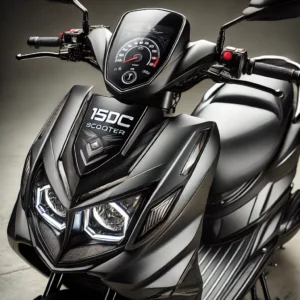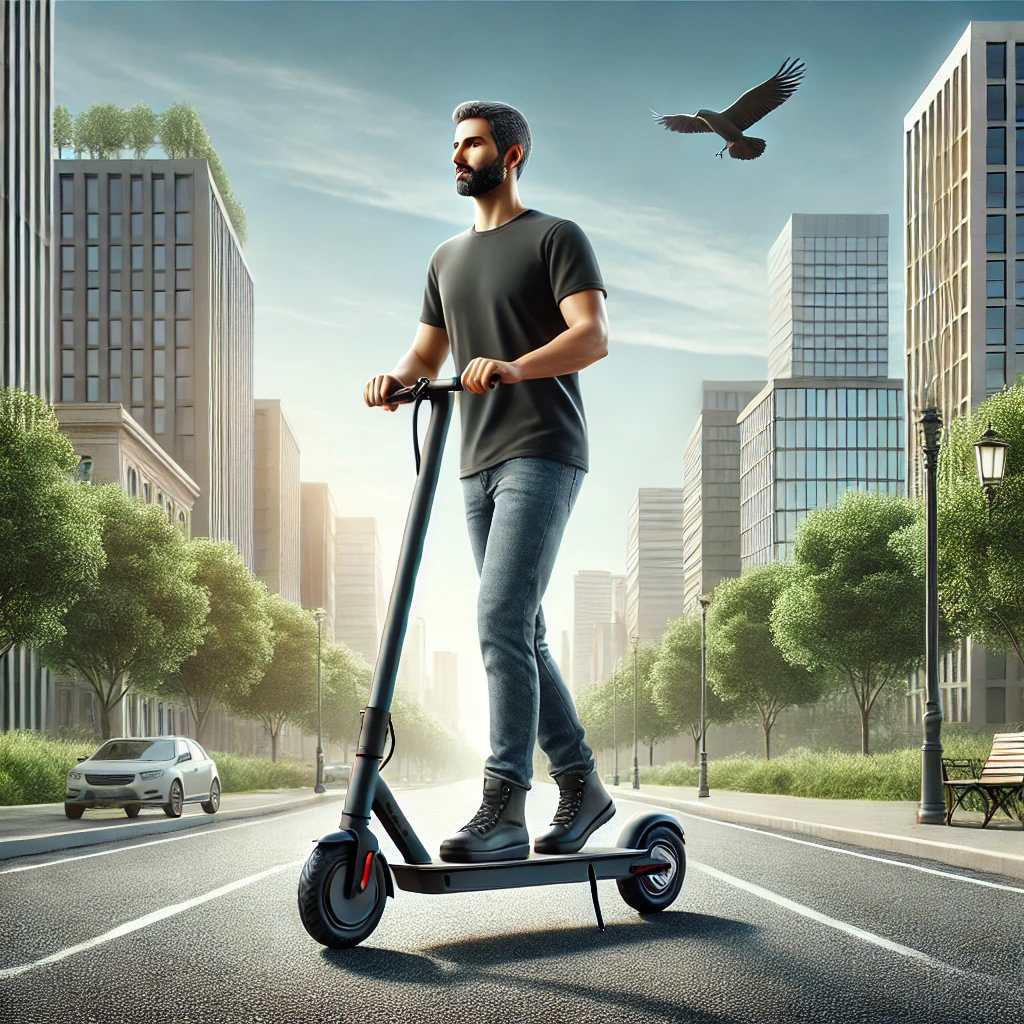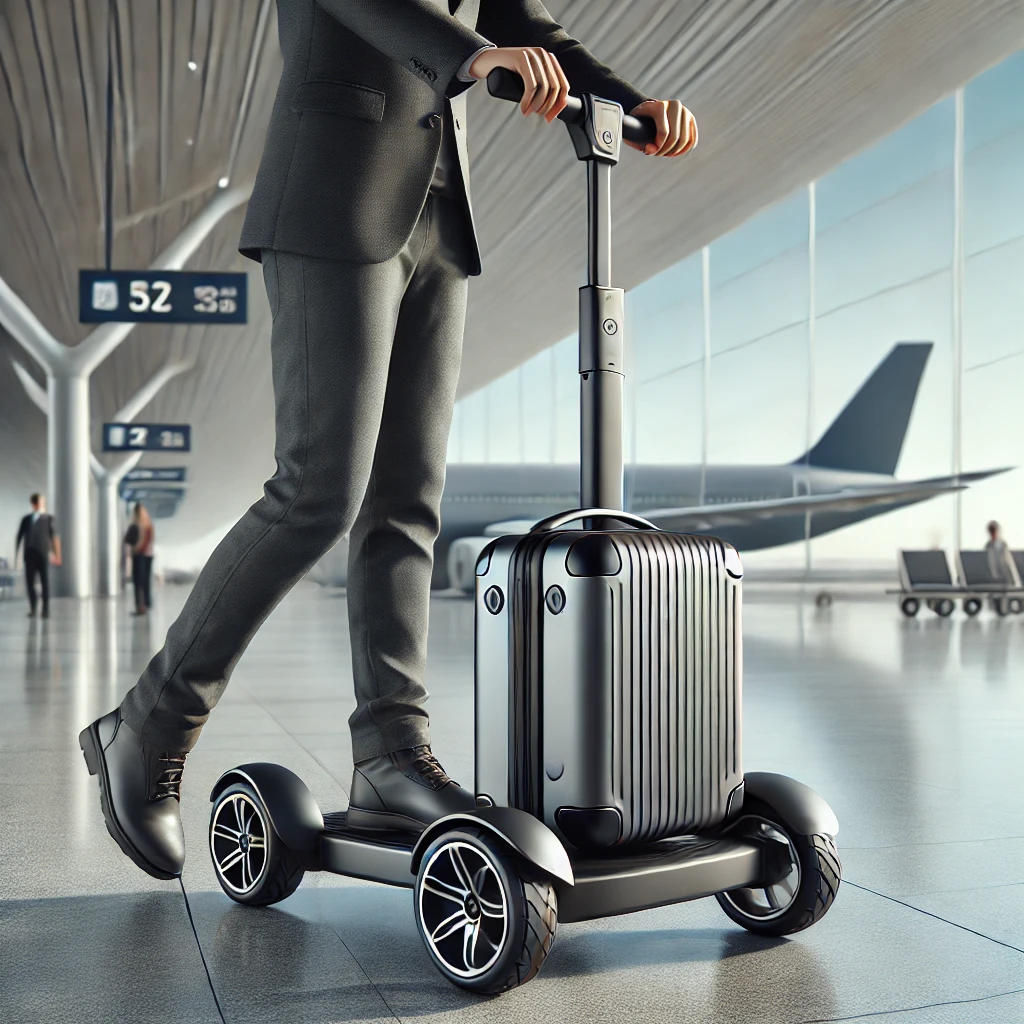Why 150 cc Scooters Are the Sweet Spot of Two-Wheel Transportation 🔥
Are you tired of being stuck in traffic during your daily commute? Perhaps you’re looking for an exhilarating yet practical way to zip around town without breaking the bank on gas? If so, a 150cc scooter might just be the game-changing solution you’ve been searching for. Not too small to feel underpowered, yet not so large as to be unwieldy, 150 cc scooters offer that perfect balance of performance, fuel economy, and maneuverability that makes them increasingly popular across America.
I’ve been riding and reviewing scooters for over a decade, and I can confidently say that the 150cc category represents the sweet spot for many riders. These machines pack enough punch to handle highways when needed, yet remain approachable for beginners and incredibly economical for everyday use. Throughout this comprehensive guide, we’ll explore everything you need to know about these versatile vehicles, from performance expectations to maintenance tips, and of course, the top models currently available on the market.
What Exactly Is a 150 cc Scooter? Understanding the Basics ⚙️
Before diving deeper, let’s clarify what we mean by a “150 cc scooter.” The “150cc” refers to the engine displacement, measured in cubic centimeters. This specification directly correlates to the power output of the engine. While smaller 50cc scooters are limited to neighborhood cruising, and larger 250cc+ models offer highway-dominating performance, 150 cc scooters hit that perfect middle ground.
Here’s what you can typically expect from a 150cc scooter:
✅ Speed Capabilities: Most 150 cc scooters can reach top speeds between 55-70 mph, making them suitable for both city streets and short highway jaunts.
✅ Fuel Efficiency: Expect impressive gas mileage, typically between 70-100 mpg depending on the model and riding conditions.
✅ Handling: Lightweight frames and balanced power make these scooters nimble in traffic yet stable at higher speeds.
✅ Legal Considerations: In most states, a 150cc scooter requires a motorcycle license, as they exceed the 50cc classification that might only need a standard driver’s license.
✅ Practicality: Under-seat storage, smartphone integration, and other modern conveniences make these vehicles highly practical for daily use.
When comparing 150 cc scooters to their smaller and larger counterparts, they truly stand out as versatile all-rounders. They offer significant performance upgrades over 50cc models without the bulkiness and higher costs associated with 250cc+ options.
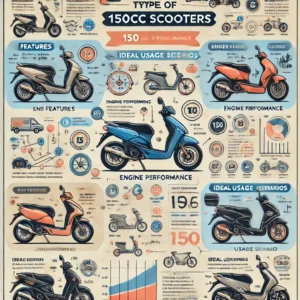
The Benefits of Choosing a 150 cc Scooter Over Other Options 🏆
Why should you consider a 150 cc scooter instead of other transportation options? Let me share some compelling reasons that might just convince you to join the growing community of scooter enthusiasts.
Economic Advantages 💰
The financial benefits of 150 cc scooters simply cannot be overstated. In a time when economic considerations are paramount for many Americans, these vehicles offer substantial savings:
- Fuel Economy: With many models achieving 80+ mpg, you might find yourself filling up for less than $10 and riding for weeks.
- Maintenance Costs: Simple engines with fewer components mean lower maintenance costs compared to cars or larger motorcycles.
- Insurance Rates: Generally much cheaper to insure than cars or larger motorcycles, often less than $200 annually for full coverage.
- Initial Investment: New 150 cc scooters typically range from $1,500-$3,000, a fraction of most vehicle purchases.
Environmental Impact ♻️
For the eco-conscious rider, 150 cc scooters represent a greener transportation alternative:
- Lower carbon emissions per mile compared to cars
- Reduced traffic congestion in urban areas
- Smaller manufacturing footprint than larger vehicles
- Many newer models incorporate emission-reducing technologies
Practical Urban Mobility 🏙️
The urban commuter particularly benefits from these nimble machines:
- Parking Advantages: Fit into compact spaces where cars cannot
- Traffic Navigation: Legally filter through congested traffic in many jurisdictions
- Commuting Efficiency: Reduce commute times by avoiding the worst traffic bottlenecks
- Storage Capacity: Surprisingly practical storage options under the seat and with additional accessories
The Joy Factor 😊
Beyond the practical benefits, there’s something undeniably fun about riding a scooter:
- Open-air experience connects you with your surroundings
- Sense of freedom and mobility not found in enclosed vehicles
- Community of fellow riders who share this passion
- Simplicity that encourages more spontaneous adventures
Top 150 cc Scooters Currently Dominating the Market 🏅
Now, let’s explore some of the best 150 cc scooters available in 2025. I’ve personally tested many of these models and consulted with dealers and long-term owners to provide comprehensive insights.
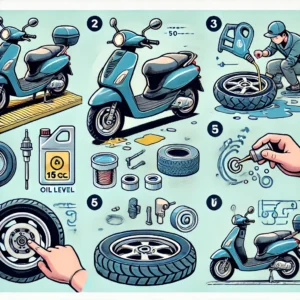
Premium Options for the Discerning Rider
1. Vespa GTS Super 150
The Italian icon continues to set the standard for premium scooters with its perfect blend of classic styling and modern technology. With hand-welded steel frames and unparalleled build quality, the GTS Super 150 delivers:
- Distinctive timeless design with modern LED lighting
- Powerful and smooth fuel-injected engine
- Anti-lock braking system (ABS) for superior safety
- Premium comfort features including smartphone connectivity
- Industry-leading resale value
While the approximately $5,000 price tag makes it among the most expensive in its class, many riders find the premium experience worth every penny.
2. Piaggio Liberty 150
Another Italian masterpiece, the Liberty offers a slightly more accessible entry point to European engineering excellence:
- Larger front wheel (16″) for superior stability and handling
- Elegant design with premium fit and finish
- Excellent fuel economy even by 150cc standards
- Balanced weight distribution for confident cornering
- Available traction control system
3. Aprilia SR GT 150
For the performance-oriented rider, Aprilia brings its racing DNA to the scooter world:
- Sport-tuned suspension with increased travel for rougher roads
- Aggressive styling inspired by Aprilia’s racing heritage
- Higher ground clearance for light off-road capability
- Enhanced braking performance with dual discs
- Sporty riding position for improved control
Value-Focused Options That Deliver
4. Honda PCX150
Honda’s reliability meets exceptional engineering in this perennially popular model:
- Class-leading fuel efficiency approaching 100 mpg
- Enhanced storage capacity that can fit a full-face helmet
- Honda’s legendary reliability and dealer support
- Available with optional ABS
- Smart key technology with theft prevention
5. Yamaha SMAX 155
Though technically a 155cc, this model deserves inclusion for its excellent value proposition:
- Slightly higher displacement offers better highway performance
- Twin-cylinder design for smoother operation
- Fully digital dashboard with extensive information display
- Automatic centrifugal clutch for more engaging riding experience
- Dual front disc brakes for confident stopping power
Budget-Friendly Options Without Major Compromises
6. Genuine Buddy 170i
Slightly above the 150cc mark but priced competitively, the Buddy has developed a cult following:
- Made by PGO (respected Taiwanese manufacturer)
- Retro styling with modern reliability
- Available in numerous eye-catching colors
- Exceptionally light weight for easy handling
- Strong dealer network and parts availability
7. TaoTao Powermax 150
At the budget end of the spectrum, the Powermax offers surprising value:
- Typically priced under $1,500, making it exceptionally accessible
- Basic but proven technology
- Surprisingly good build quality for the price point
- Easily available replacement parts
- Simple maintenance requirements
Comparison: Top 150 cc Scooters Head-to-Head ⚔️
To help you make an informed decision, I’ve created this detailed comparison of the top contenders:
| Model | Top Speed | Fuel Economy | Storage Capacity | Price Range | Special Features |
|---|---|---|---|---|---|
| Vespa GTS Super 150 | 65 mph | 75-85 mpg | Medium (1 helmet) | $4,900-$5,300 | ABS, traction control, premium materials |
| Piaggio Liberty 150 | 63 mph | 80-90 mpg | Medium (1 helmet) | $3,300-$3,600 | 16″ front wheel, traction control |
| Aprilia SR GT 150 | 68 mph | 70-80 mpg | Small-Medium | $3,500-$3,800 | Advanced suspension, sport tuning |
| Honda PCX150 | 63 mph | 90-100 mpg | Large (1+ helmet) | $3,700-$4,100 | Smart key, optional ABS |
| Yamaha SMAX 155 | 65 mph | 85-95 mpg | Medium-Large | $3,600-$3,900 | Twin cylinder engine, digital display |
| Genuine Buddy 170i | 65 mph | 85-95 mpg | Small-Medium | $2,900-$3,200 | Retro styling, lightweight |
| TaoTao Powermax 150 | 55 mph | 80-90 mpg | Medium | $1,200-$1,500 | Basic functionality, low price |
🔥 Ready to experience the freedom and efficiency of a 150 cc scooter? These top models are available now on Amazon with special pricing and quick delivery. Click any highlighted model name to check current deals and secure your perfect ride!
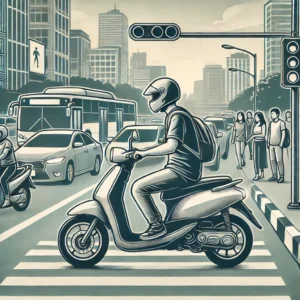
Essential Gear for the 150 cc Scooter Rider 🧰
Owning a 150 cc scooter isn’t just about the vehicle itself—proper gear and accessories enhance both safety and enjoyment. Here are my top recommendations based on years of riding experience:
Safety First: Protective Gear
1. HJC i90 Modular Motorcycle Helmet
This DOT-approved helmet offers the versatility of a flip-up design with excellent protection:
- Polycarbonate composite shell for lightweight protection
- Advanced ventilation system prevents fogging
- Integrated sun shield eliminates need for sunglasses
- Comfortable for longer rides
- Available in multiple sizes and colors
2. Alpinestars SMX-1 v2 Air Riding Shoes
These riding shoes offer protection without looking like full motorcycle boots:
- Ankle protection for a common injury point
- Reinforced toe and heel areas
- Breathable design for comfort in hot weather
- Street-wearable style for convenience
- Excellent grip on slippery surfaces
3. Rev’it Eclipse Jacket
A perfect balance of protection and comfort for scooter riders:
- Abrasion-resistant outer layer
- CE-rated armor at shoulders and elbows
- Available in lightweight summer and insulated winter versions
- Reflective elements for visibility
- Casual styling that doesn’t scream “motorcycle gear”
Must-Have Accessories for Convenience
4. GIVI SR5600M Top Case Mounting Rack
Compatible with many 150 cc scooters, this mounting system allows for:
- Easy attachment of additional storage
- Quick-release mechanism for removing your case
- Sturdy construction that won’t vibrate loose
- Sleek design that complements most scooters
- Universal fitting kit included
5. Kuryakyn 1698 Handlebar Power Outlet
Keep your devices charged on the go:
- Weather-resistant USB charging port
- Easy installation on most handlebars
- Secure connection prevents disconnection during rides
- LED power indicator
- Compatible with most USB-chargeable devices
Understanding 150 cc Scooter Maintenance: Keep Your Ride Running Smooth 🔧
One of the biggest advantages of 150 cc scooters is their relatively simple maintenance requirements compared to cars or larger motorcycles. However, proper care is still essential for longevity and performance.
DIY Maintenance Tasks
Many maintenance tasks can be handled by owners with basic tools and mechanical knowledge:
✅ Regular Oil Changes: Typically needed every 1,000-1,500 miles, using manufacturer-recommended oil.
✅ Air Filter Cleaning/Replacement: Essential for fuel efficiency and performance, typically every 2,000-3,000 miles.
✅ Tire Pressure Checks: Weekly checks ensure optimal handling and fuel economy.
✅ Belt Inspection: The drive belt should be checked every 5,000 miles and replaced when showing signs of wear.
✅ Brake Pad Inspection: Safety-critical components that should be checked monthly.
Professional Service Points
Some maintenance items are best left to professionals:
⚙️ Valve Adjustments: Typically needed every 5,000-8,000 miles depending on the model.
⚙️ Major Engine Components: Issues with transmission, cylinder head, or electrical systems.
⚙️ Emission Control Systems: Particularly important in states with strict emissions testing.
Seasonal Maintenance Considerations
For riders in four-season climates, special attention should be paid to:
🌞 Summer Preparation: Cooling system checks, lighter weight oils where appropriate.
❄️ Winter Storage: Fuel stabilization, battery maintenance, proper storage techniques.
🌧️ Wet Weather Readiness: Brake inspections, electrical system protection, anti-corrosion treatments.
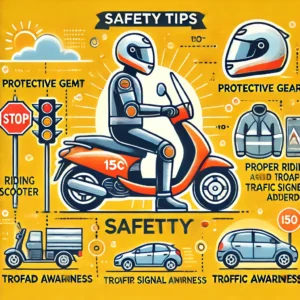
Legal Considerations for 150 cc Scooter Owners 📋
Understanding the legal requirements for 150 cc scooters is crucial, as they differ significantly from smaller 50cc models in most states.
Licensing Requirements
In most U.S. states, 150 cc scooters are classified as motorcycles, requiring:
- Motorcycle endorsement or license
- Completion of a motorcycle safety course (highly recommended and required in some states)
- Regular vehicle registration
- Proper insurance coverage
Insurance Requirements
While requirements vary by state, most riders should consider:
- Liability coverage (usually mandatory)
- Comprehensive coverage for theft/damage when not riding
- Collision coverage for accidents
- Uninsured/underinsured motorist protection
Helmet Laws
Helmet requirements vary considerably by state:
- Some states require helmets for all riders
- Others only require them for riders under certain ages
- A few states have no helmet requirements at all (though wearing one is always recommended)
Always check current requirements in your state, as laws can change, and ignorance of the law isn’t a valid defense.
Common FAQs About 150 cc Scooters 🤔
Based on questions I frequently receive from readers and potential buyers, here are answers to the most common queries:
How fast can a 150 cc scooter go?
Most 150 cc scooters have a top speed between 55-70 mph, depending on the model, rider weight, and conditions. This makes them suitable for most urban and suburban roads, including brief highway travel in many areas.
Do I need a motorcycle license for a 150 cc scooter?
In most states, yes. Unlike smaller 50cc scooters that sometimes can be ridden with just a standard driver’s license, 150cc models typically require a motorcycle endorsement or license.
How much does it cost to maintain a 150 cc scooter?
Annual maintenance costs typically range from $200-$500, significantly less than cars or larger motorcycles. DIY maintenance can reduce these costs further.
Are 150 cc scooters good for beginners?
Yes, with proper training. While more powerful than 50cc models, 150 cc scooters are still relatively easy to handle, with automatic transmissions and balanced weight distribution. A motorcycle safety course is highly recommended for new riders.
How long do 150 cc scooters last?
With proper maintenance, a quality 150 cc scooter can last 20,000-30,000 miles or more. Some premium brands like Honda, Yamaha, and Vespa are known to exceed 50,000 miles with regular care.
Can I ride a 150 cc scooter on the highway?
In most areas, yes, but with cautions. While legally allowed on most highways, their top speed limitations make them best suited for highways with speed limits of 55-65 mph rather than 70+ mph interstates.
What’s the average MPG for a 150 cc scooter?
Most 150 cc scooters achieve 70-100 mpg depending on the model, riding conditions, and rider weight. This exceptional efficiency is one of their main selling points.
How much should I expect to pay for a good 150 cc scooter?
Prices range widely:
- Budget options: $1,200-$2,000
- Mid-range quality: $2,000-$3,500
- Premium models: $3,500-$5,500+
Making the Smart Purchase: What to Look for When Buying a 150 cc Scooter 🔍
If you’re convinced a 150 cc scooter is right for you, here’s my expert advice on making a purchase you won’t regret.
New vs. Used Considerations
New Scooter Advantages:
- Warranty protection
- Latest features and technology
- No hidden mechanical issues
- Dealer support and service packages
Used Scooter Value:
- Significantly lower cost (often 30-50% less than new)
- Avoidance of initial depreciation
- Potentially higher-quality model for the same budget
- Already broken in
When buying used, always:
- Check for service records
- Look for signs of crashes or damage
- Test ride to check for unusual noises or handling issues
- Verify the VIN matches the title
- Consider a mechanic inspection for expensive models
Brand Reputation and Support
Some brands consistently outperform others in reliability and support:
Tier 1 – Premium Reliability & Support:
- Honda
- Yamaha
- Vespa/Piaggio
- Genuine Scooters
Tier 2 – Good Quality with Wider Dealer Networks:
- Kymco
- SYM
- Aprilia
Tier 3 – Budget Options with Variable Quality:
- TaoTao
- Wolf
- Ice Bear
The price difference often reflects not just badge value but genuine differences in engineering, materials, and expected longevity.
Test Riding Tips
When evaluating a potential purchase, pay special attention to:
- Initial Starting: Should start easily without multiple attempts
- Idle Quality: Look for smooth, consistent idle without surging
- Throttle Response: Should be predictable without hesitation
- Braking Feel: Brakes should engage smoothly and predictably
- Suspension Action: Should absorb bumps without bottoming out
- Handling Balance: Should feel stable both at low speeds and near top speed
- Comfort: Pay attention to seating position, legroom, and vibration levels
The Environmental Impact of Choosing a 150 cc Scooter 🌎
In an increasingly eco-conscious world, the environmental aspects of transportation choices matter more than ever. Here’s how 150 cc scooters stack up:
Carbon Footprint Comparison
When compared to typical transportation alternatives, 150 cc scooters generally offer:
- Vs. Cars: Approximately 60-80% less CO2 emissions per mile
- Vs. Public Transit: Varies widely, but generally comparable to full buses and better than half-empty buses
- Vs. Electric Vehicles: Higher direct emissions but lower manufacturing footprint
Emissions Standards
Modern 150 cc scooters, particularly from major manufacturers, must meet increasingly stringent emissions regulations:
- Euro 4/5 compliant models offer significantly improved emissions over older designs
- Fuel injection systems provide more efficient combustion than older carbureted models
- Catalytic converters are standard on most newer models
Future Trends: Electric Alternatives
While this article focuses on 150cc gas-powered scooters, it’s worth noting the growing electric alternatives:
- Equivalent electric scooters offer zero direct emissions
- Battery production and disposal present their own environmental challenges
- Charging infrastructure continues to improve nationwide
- Many manufacturers are developing hybrid and fully electric alternatives to their popular 150cc models
Real Riders’ Experiences: What Owners Say About Their 150 cc Scooters 🗣️
To provide perspective beyond my own experience, I’ve gathered insights from long-term owners of various 150cc models.
Honda PCX150 Owner: Michael from Chicago
“After two years and almost 8,000 miles, my PCX150 has been flawless. I commute 15 miles each way in all weather except snow, and it’s saved me thousands in parking and gas. The only unexpected cost was replacing the belt earlier than scheduled due to my heavy city riding with frequent stops and starts.”
Vespa GTS 150 Owner: Sophia from San Francisco
“Yes, I could have bought three cheaper scooters for the price of my Vespa, but after five years, it still runs and looks practically new. The build quality is tangible every time I ride. Hills are no problem, and I get compliments almost daily. Service costs are higher, but the frequency is much lower than my previous scooter.”
TaoTao Powermax Owner: James from Houston
“As a college student on a tight budget, the TaoTao was my only option. It’s had some issues—I’ve replaced the voltage regulator and had to adjust the valves twice in one year—but for $1,200, I’ve still come out way ahead compared to using Uber or buying a car. Just budget for some maintenance and be prepared to learn basic repairs.”
Conclusion: Is a 150 cc Scooter Right for Your Lifestyle? 🤩
After exploring the world of 150 cc scooters in depth, you’re now equipped to make an informed decision about whether these vehicles align with your transportation needs and lifestyle preferences.
For urban and suburban dwellers looking for an economical, efficient, and enjoyable transportation option, 150 cc scooters offer a compelling package that’s hard to beat. Their blend of highway-capable performance, exceptional fuel economy, and manageable size creates a practical daily vehicle that also delivers genuine riding enjoyment.
However, they’re not for everyone. Those regularly needing to travel at interstate speeds, carry multiple passengers, or transport large cargo might find them limiting. Similarly, riders in areas with extreme winter conditions may find their use seasonally restricted unless they’re particularly hardy.
As with any significant purchase, the key is matching the vehicle to your specific needs rather than trying to make it serve all possible purposes. For many Americans, a 150 cc scooter can handle 80-90% of their regular transportation needs while delivering substantial savings and a more connected, enjoyable travel experience.
🛵 Ready to experience the freedom, efficiency, and joy of 150 cc scooter ownership? The models highlighted in this guide represent the best options currently available. Click any of the highlighted product links to check current pricing and availability on Amazon, and take the first step toward transforming your daily commute!
More FQAs:
❓ How fast can a 150cc scooter go?
✅ Most 150cc scooters have a top speed of 55-70 mph, depending on the model, rider weight, and road conditions...
❓ Do you need a license to ride a 150cc scooter?
✅ Yes, in most states and countries, a motorcycle license or endorsement is required to legally operate a 150cc scooter on public roads...
❓ How fuel-efficient are 150cc scooters?
✅ A 150cc scooter typically gets between 60-100 miles per gallon (mpg), making it a cost-effective option for commuting...
❓ Can a 150cc scooter be used on highways?
✅ Some highways allow 150cc scooters, but it depends on local laws and speed limits. Their lower top speed may not be suitable for high-speed traffic...
❓ What is the maintenance required for a 150cc scooter?
✅ Regular maintenance includes oil changes, brake inspections, tire pressure checks, and keeping the air filter clean to ensure optimal performance...
Recommended for You:
- DIY Scooter Repair Guide 2025: Expert Tips to Save Money & Extend Your Ride’s Life
- Best Luggage Scooter 2025: Travel Smarter, Move Faster
- Unleash Your Urban Adventure 2025: The Ultimate Hover 1 Scooter Guide for Freedom Seekers
Disclaimer: This article contains affiliate links. If you purchase products through these links, we may earn a small commission at no additional cost to you.

